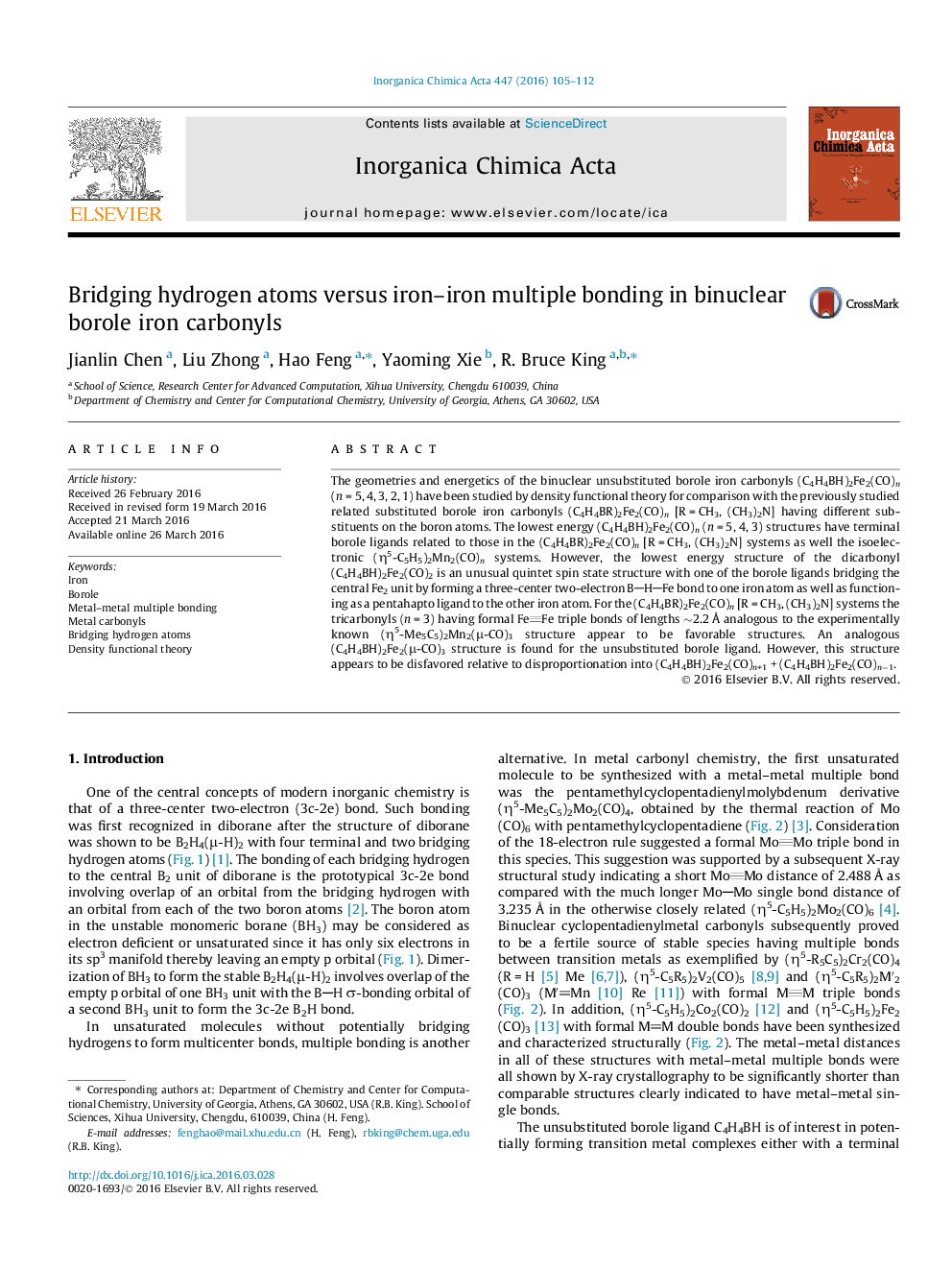| کد مقاله | کد نشریه | سال انتشار | مقاله انگلیسی | نسخه تمام متن |
|---|---|---|---|---|
| 1307485 | 1499142 | 2016 | 8 صفحه PDF | دانلود رایگان |
• The (C4H4BH)2Fe2(CO)n (n = 5, 4, 3, 2, 1) systems have been studied by density functional theory.
• The lowest energy (C4H4BH)2Fe2(CO)n (n = 5, 4, 3) structures have terminal borole ligands.
• The lowest energy (C4H4BH)2Fe2(CO)2 structure is a quintet structure with a BHFe three-center two-electron bond.
• (C4H4BH)2Fe2(CO)3 is disfavored in energy with respect to disproportionation unlike (C4H4BR)2Fe2(CO)n [R = CH3, (CH3)2N].
The geometries and energetics of the binuclear unsubstituted borole iron carbonyls (C4H4BH)2Fe2(CO)n (n = 5, 4, 3, 2, 1) have been studied by density functional theory for comparison with the previously studied related substituted borole iron carbonyls (C4H4BR)2Fe2(CO)n [R = CH3, (CH3)2N] having different substituents on the boron atoms. The lowest energy (C4H4BH)2Fe2(CO)n (n = 5, 4, 3) structures have terminal borole ligands related to those in the (C4H4BR)2Fe2(CO)n [R = CH3, (CH3)2N] systems as well the isoelectronic (η5-C5H5)2Mn2(CO)n systems. However, the lowest energy structure of the dicarbonyl (C4H4BH)2Fe2(CO)2 is an unusual quintet spin state structure with one of the borole ligands bridging the central Fe2 unit by forming a three-center two-electron BHFe bond to one iron atom as well as functioning as a pentahapto ligand to the other iron atom. For the (C4H4BR)2Fe2(CO)n [R = CH3, (CH3)2N] systems the tricarbonyls (n = 3) having formal FeFe triple bonds of lengths ∼2.2 Å analogous to the experimentally known (η5-Me5C5)2Mn2(μ-CO)3 structure appear to be favorable structures. An analogous (C4H4BH)2Fe2(μ-CO)3 structure is found for the unsubstituted borole ligand. However, this structure appears to be disfavored relative to disproportionation into (C4H4BH)2Fe2(CO)n+1 + (C4H4BH)2Fe2(CO)n−1.
The geometries and energetics of the binuclear unsubstituted borole iron carbonyls (C4H4BH)2Fe2(CO)n (n = 5, 4, 3) are similar to those of the related substituted borole iron carbonyls (C4H4BR)2Fe2(CO)n [R = CH3, (CH3)2N]. However, an unusual quintet (C4H4BH)2Fe2(CO)2 structure is found with a three-center BHFe bond.Figure optionsDownload as PowerPoint slide
Journal: Inorganica Chimica Acta - Volume 447, 1 June 2016, Pages 105–112
